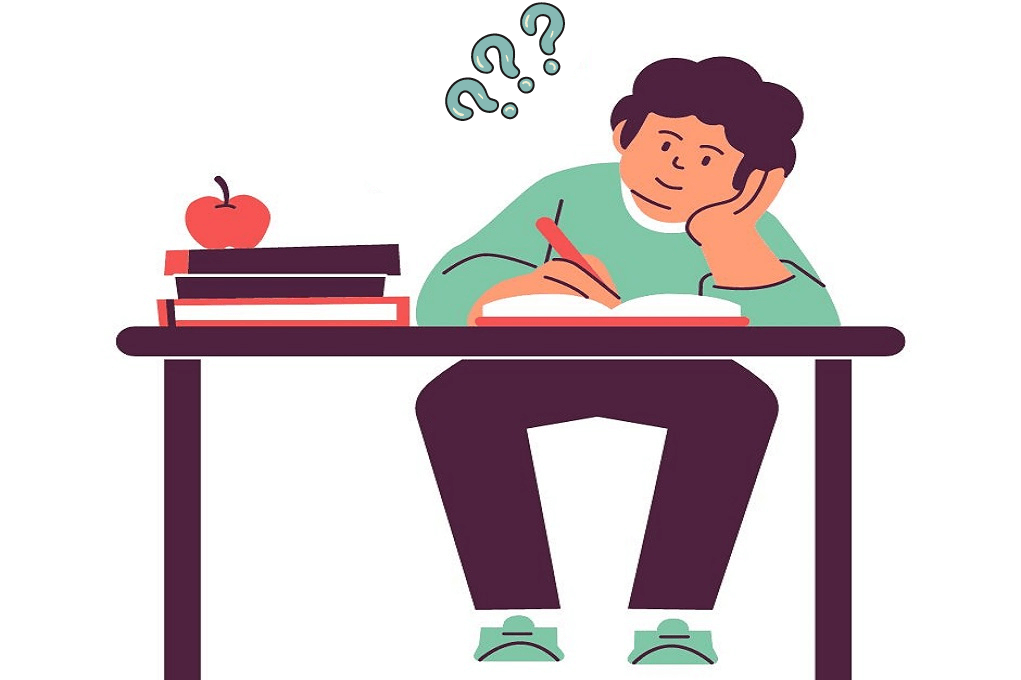| EXCLUSIVE!!!!! Get Ready for 2024 WAEC and JAMB. Click the links below Now to Download the free 1. Edubaloo WAEC & JAMB CBT Practice App for Android 2. Updated Edubaloo WAEC & JAMB CBT Practice App for Apple Devices! |
Is your child preparing for their upcoming WAEC exam? Do you want to ensure they have the best chance of success? Then, you need to know their unique learning style. As a parent, you want what’s best for your child when it comes to their education and generally. And with exams like WAEC and JAMB being so crucial, you’re probably wondering what you can do to help them succeed.
But here’s the thing: many parents make the mistake of leaving all the work to the teachers and school. Sure, teachers are important, but as a parent, you can also play a massive role in your child’s exam success.
One way to make a significant impact that many parents are not aware of is identifying your child’s learning style and abilities. A child’s learning style determines the best way to learn and retain information. Therefore, knowing this information helps you to understand how best to work with them and help them achieve academic excellence. In this article, we’ll show you exactly how to identify your child’s learning style and provide practical strategies for supporting them on their journey to exam success. With these tips, you’ll be well-equipped to help your child thrive and excel in their WAEC and JAMB exams and beyond. So let’s dive in!
The Three Main Learning Styles
Each child has a unique way of taking in and processing information, and parents need to identify their child’s learning style to help them succeed academically. Before we dive into how to identify your child’s learning style, let’s look at the three main learning styles to be aware of: visual, auditory, and kinesthetic.
Visual learners: Visual learners prefer to learn by seeing the information. They often remember what they see easier than what they hear. They enjoy working with graphs, charts, and diagrams and often remember what they see more easily than things they have heard. To help your child with this learning style, you can use visual aids like graphs, charts, and diagrams. Flashcards, mind maps, and videos are also great tools for visual learners studying for WAEC and JAMB exams.
Auditory Learners: On the other hand, Auditory learners prefer to learn by hearing information. They prefer lectures, discussions, and audio recordings and often remember things they have listened to more easily than things they have seen. To support this learning style, you can encourage your child to listen to recordings of their notes or read their notes aloud while studying for exams.
Kinesthetic Learners: Kinesthetic learners enjoy learning by doing and experiencing information. They enjoy hands-on activities, experiments, and role-playing. If your child is a kinesthetic learner, they can benefit from creating study games, contests, or engaging in hands-on activities like building models or practicing past questions when studying for WAEC and JAMB exams.
How to Identify Your Child’s Learning Style
Here are some tips to help you identify your child’s learning style:
A. Signs and Behaviors
Observing your child’s behavior can give you an idea of their learning style. Here are some behaviors that can indicate your child’s learning style:
Visual learners:
- Prefers to read and write over listening
- Enjoys visual aids such as diagrams, charts, and videos
- Has a good sense of direction and orientation
- Has a good memory for faces and places
Auditory learners:
- Enjoys listening to music and sounds
- Talks to themselves while working
- Remembers information they hear more easily than what they see
- Likes to discuss and debate ideas
Kinesthetic learners:
- Moves around a lot and has trouble sitting still
- Likes to touch and manipulate things
- Enjoys hands-on activities and experiments
- Learns best when they are physically active
B. Ask Questions
Asking your child questions can also help you identify their learning style. Here are some examples of questions to ask:
Visual learners:
- Do you like to read or watch videos?
- Do you prefer diagrams or written instructions?
- Do you remember information better when you see it?
Auditory learners:
- Do you like to listen to music or talk shows?
- Do you like to discuss ideas with others?
- Do you remember information better when you hear it?
Kinesthetic learners:
- Do you like to move around while you work?
- Do you like to touch and feel things?
- Do you learn better by doing things rather than reading or listening?
C. Observing Behavior
Observing your child’s behavior can also help you identify their learning style. Here are some tips to help you observe your child.
Visual learners:
- Observe if your child likes to draw, paint or create things visually.
- Notice if your child is drawn to colourful images, charts, and diagrams.
Auditory learners:
- Observe if your child enjoys listening to music or talking out loud to themselves
- Notice if your child prefers to have things explained verbally
Kinesthetic learners:
- Observe if your child likes to touch and manipulate objects
- Notice if your child likes to play sports, dance, or do other physical activities
D. Supporting Your Child
Visual Learners:
- If your child fits into the visual learning category, you can do these to help them succeed:
- Get them colored highlights, markers, and pens to help them highlight important sections of their reading materials as they study.
- Encourage using visual aids like charts, diagrams, and graphs while studying to help them learn and retain information.
- Help them create colourful and visually appealing mind maps for the various subjects they are learning. Using vibrant colors and captivating illustrations, mental maps can help clarify complex concepts while providing a comprehensive plan for preparing for tests.
- Suggest they watch educational videos that correspond to the exam’s subject matter.
- Use flashcards to help them remember important information.
- Provide them with past questions and solutions in visual formats, such as infographics. Apps like Edubaloo provide past questions and answers in a visually appealing and captivating manner that makes their study process enjoyable and more effective.
- Provide them with a quiet and well-lit study space.
Auditory Learners:
- Suggest they create mnemonic devices or rhymes to help them remember information in a fun and creative way. A mnemonic device is a memory trick involving using rhymes, songs, poems, acronyms, etc., to increase your recall and retention of information. An example is the popular “Thirty days hath September” poem to remember how many days are in each month of the year. Another example is the phrase: “Hello Helen Let Big Boys Come Near Our Farm Now” which can be used to remember the first 10 elements of the periodic table where Hello – H – Hydrogen; Helen – He – Helium; Let – Li – Lithium, Big – Be – Beryllium, Boys – B – Boron, Come – C – Carbon, Near – N – Nitrogen, Our – O – Oxygen, Farm – F – Flourine, Now – Ne – Neon.
- Suggest they read their notes aloud or make audio recordings of their notes and listen to them while studying to help them retain information.
- Encourage them to ask questions and participate in group discussions or study sessions with friends.
- Help them find educational podcasts or audiobooks on subjects or topics they are studying for the exam for better understanding.
- Make use of apps that provide audio explanations or quizzes. A good example is the Edubaloo app which offers audio quizzes and explanations for WAEC, and JAMB.
Kinesthetic Learners:
- Suggest or help them study games or engage in hands-on activities like building models or conducting experiments on a particular topic they’re studying for their exams.
- Encourage them to take breaks and engage in physical activities during study sessions, stretching, walking, or doing some light exercises.
- Help them create a study environment that allows for movement and engagement with the material. This can include using a standing desk, fidget toys, or creating a study area with space for movement and activities.
- Suggest they use real-life examples and scenarios to explain concepts.
- Provide them with past questions and study apps that simulate a real-life CBT environment and offer interactive quizzes.
- Provide them with headphones to block out distractions.
- Suggest they listen to music or white noise to help them focus.
- Encourage them to study in a quiet place.
Incorporating Multiple Learning Styles
Sometimes, students may excel in multiple learning styles. It is important to create a multi-faceted approach that incorporates multiple learning styles to maximize the chances of success. For example, you can suggest your child switches between using flashcards to memorize vocabulary and listening to audiobooks to understand the topic. This can help the child understand and remember the information better.
Benefits of Identifying and Supporting Your Child’s Learning Style
Here are some benefits of identifying and supporting your child’s learning style:
- Improved Academic Performance: When your child learns in a way that best suits their needs, they are more likely to understand and remember information better. They will also be more motivated to study, which can improve their academic performance.
- Increased Self-Confidence: When children learn and understand things better, it can boost their confidence. They become more confident in their abilities, leading to better grades, improved relationships with teachers and peers, and higher self-esteem.
- Better Communication with Teachers: Understanding your child’s learning style can help you work better with your teachers to create an effective learning environment. You can provide the teacher with information on your child’s learning style, which can help them tailor their teaching methods to meet your child’s needs.
- Reduced Stress: Learning in a way that doesn’t suit their learning style can lead to frustration and stress. It makes learning more complex and can lead to lower grades. Identifying your child’s learning style and tailoring their study methods accordingly can help reduce stress and make learning a more enjoyable experience for them.
- Encouragement and Support: Showing your child that you understand their learning style and are willing to support them in whatever way is necessary can be incredibly encouraging for them. Knowing they have your support and understanding can give them the confidence to take risks and try new things. This can enrich their learning experience and help them reach.
Bottom line
Identifying and understanding your child’s learning style can help create an effective learning environment that maximizes their chances of success. Share information about your child’s learning style with their teachers and ask them for their input on how you can support your child’s learning at home. By working together, you can positively impact your child’s academic performance, confidence and reduce stress. They’ll surely be acing those coming exams!



